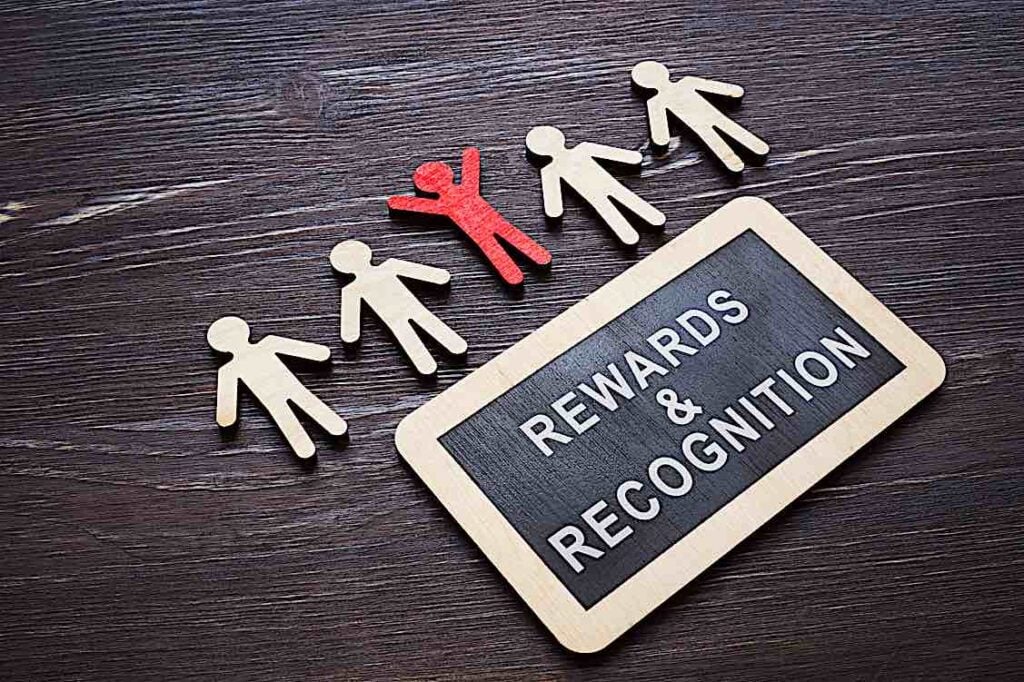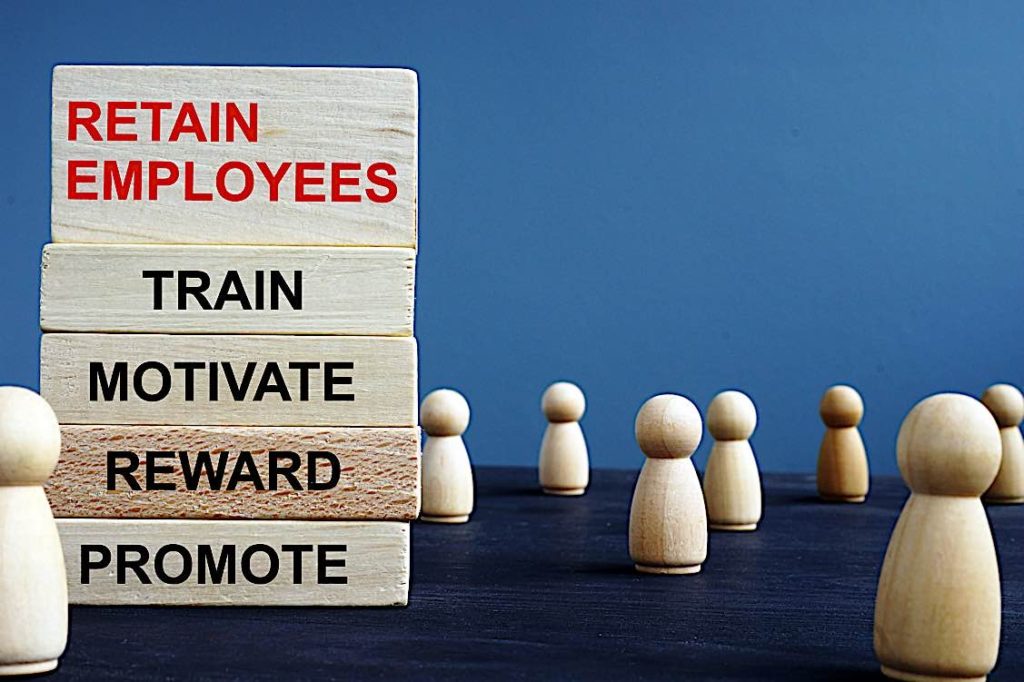
47 percent of workers want more recognition; top 5 complaints from employees about recognition in the Workplace: Survey
A survey by Eagle Hill Consulting has found that 47% of workers in the U.S. would like more recognition for the work that they do while 21% say that they are never recognized for their efforts at all [1].
Melissa Jezior, president and CEO of Eagle Hill Consulting, says that “employers need to double down on employee recognition programs. Far too many employees are burnt out from their workload and say they aren’t recognized for their efforts … Failing to acknowledge workers is a recipe for subpar organizational performance and high attrition, the last thing employers need in a volatile economy”.
Yet, according to Eagle Hill’s survey, only 36% of workers said their employer developed new ways of recognizing employees in the past year and just 25% asked workers how they would like to be recognized [2].
Why has recognition at work become more important?
Mike Byam, executive chairman of Terryberry in Grand Rapids, Michigan, said “the lack of appreciation of performance is one of the things that’s driving the resignation and people moving jobs. So that’s something that can be addressed … it’s been encouraging that even in this time, with so many different challenges, people recognize the value of it” [3].
There are many reasons for the exodus of people leaving their jobs during and after the pandemic, but the heart of the issue was that people’s tolerance levels for many things had decreased sharply.

The pandemic, followed closely by complicating economic factors, brought with it a slew of rules and regulations that shifted constantly like sand amidst fearmongering, confusion, and uncertainty. Organizations, governments, and people hesitated at every turn, trying their best to decide what the next best step to take was.
A new way of “doing everything”
The pressure, stress, and onslaught of change after massive change left the general public drained. They were forced to adjust to a new way of doing everything in their life – shopping, interacting with their families, dating, meeting friends, studying.
For employees who had to work from home, they suddenly found themselves stretched in a billion different directions. They needed to learn how to work remotely, make their own meals, teach their children, make time for their friends, family, and spouses, and still find time for their own interests.
Burnout factors
Somewhere in the midst of all that chaos, it appears that people learned the value of their time and effort. They were constantly spread too thin. The ongoing burnout meant that their tolerance levels for toxicity, rudeness, and effort that went unrecognized tanked. Additionally, while it’s easy to speak to friends and family about wanting more recognition, it isn’t so easy in the workplace.
Moreover, the pandemic showed people how their workplaces felt about them. A workplace’s response to the pandemic as well as government rules and guidelines told employees if their workplace really cared about their safety, how connected the workplace and employees were, and how treasured the employee was.
Chris Vyse, VP of sales and marketing at OC Tanner in Burlington, Ontario said, “we used to talk a lot about employee engagement for a number of years, but now it seems to be more about connection, employees feeling connected to the organization, to their colleagues and to the purpose of the organization. It’s required creativity, and that continues now that we’re in the hybrid model” [4].

What employees need from their workplace to feel recognized
The most common symptom of employees that feel unrecognized and disconnected to their workplace is doing the “bare minimum”. Sometimes also called quiet quitting, this is a phenomenon where employees do only exactly what their job entails and not a smidge more. This is because they feel that there is no point to go outside the parameters of their job role since their workplace doesn’t appear to care about what they do.
Quiet quitting can create imbalances in teams, as more engaged employees pick up the slack that their disengaged colleagues left them. This can morph into burnout, frustration, and increasing difficulty to deliver high-quality, efficient output.
The biggest and most impactful ways to show employees that they are important to the workplace are of course salary and benefits, but it’s imperative that a workplace doesn’t stop there.

The Eagle Hill Consulting survey showed that the top 5 complaints of employees about recognition were the following: 38% of employees think that recognition programs should be more frequent, 30% said that they would like these programs to be shared more broadly across the organization, 26% said that they should be easier to provide, and 24% said that they should be unbiased [5].
7 ways employees want to be recognized
As to how they wished to be shown recognition, employees said that they preferred the following means:
- cash or gifts (54%)
- time off (34%)
- a thank you email or note (32%)
- points to choose a reward (23%)
- experience opportunities like tickets (22%)
- public recognition (20%)
- employee of the week/month programs (19%) [6]

These means of recognition are neither difficult to set up nor cost-ineffective. Melissa Jezior, president and CEO of Eagle Hill Consulting notes that “the key to success is creating a culture in which thanking workers is woven into the fabric of day-to-day operations from the top to the bottom, not just a one-off effort that checks the box on recognition” [7].
The benefits of making employees feel recognized
Ensuring that employees feel recognized brings many positive effects to employees.
Of those surveyed, 60% of workers said that recognition makes them feel that the work they do is meaningful, 51% say that it makes them feel their team supports them, 32% said that it makes them more motivated at work, and 29% said that it makes them feel they are achieving something higher than just their career potential [8].
When they feel that their work is recognized, employees are more likely to:
- go above and beyond their responsibilities (53%)
- stay with their organization (48%)
- be more motivated to support their team (43%)
- go above and beyond for customers (38%) [9]
It’s clear that the benefits of workplace recognition positively affect employees’ emotional wellbeing and performance. Natalie Wickham, VP of marketing at Quantum Workplace, says that “employees want to feel valued at work. They want recognition for their contributions to team and organizational success … while extremely important, recognition isn’t only about making employees more engaged or feeling good about their job. It can be a differentiator for organizations in their employee value proposition and can affect an employee’s intent to stay at an organization” [10].
Ensuring employees feel recognized doesn’t just keep employees at a job, but it can entice them to a job as well. Knowing or hearing of a workplace that has a culture of recognition can be a factor for people when they are deciding between potential workplaces.

A different approach to the employer-employee relationship
The survey shows that having a culture of recognition positively impacts employees’ mental, emotional, and even physical well-being. It motivates employees to do their best, contribute value to the company, and builds a sense of security in their role.
Included in a culture of recognition is showing gratitude. According to Michael Timms, a leadership development consultant, gratitude reinforces desirable behaviors and results, serving as a positive consequence for employees’ actions. As a result, it helps the organization enjoy increased output, efficiency, and efficacy.
Timms says, “the reason why gratitude actually works to reinforce behaviors is that when we are praised for doing something, our brain releases a chemical called dopamine. And dopamine feels really good … here’s the key: behavior that is praised gets repeated simply because we are all addicted to dopamine. We are going to repeat the behavior that we’ve been praised for previously. That’s why gratitude works as a leader’s tool to increase accountability in the workplace” [11].
The surveys, experts, and leaders in this article have concluded that making employees feel recognized is a worthwhile effort to invest in. Not only does it benefit employees directly, but it benefits the company indirectly as well.
While life may be slowly returning to normal, the changes and trends that the pandemic caused are still being felt today. It’s imperative that organizations keep up so that they can stay on top.
Sources
[1] [2] [5] [6] [7] [8] [9] [10] “What are top 5 complaints about recognition programs?” by Jim Wilson, Nov 14, 2022. Canadian HR Reporter.
[3] [4] “The latest trends in employee recognition.” by John Dujay, Jun 26, 2022. Canadian HR Reporter.
[11] “What’s the best way to show gratitude to employees?” by Jim Wilson, Nov 24, 2021, Canadian HR Reporter.


 Our HR solutions experts can recommend the right mix of HR outsourced services to make your entry into Canada easier.
Our HR solutions experts can recommend the right mix of HR outsourced services to make your entry into Canada easier.  Pivotal Employment Management Services co-hires your workforce, simplifying entry of your business in Canada.
Pivotal Employment Management Services co-hires your workforce, simplifying entry of your business in Canada. 















